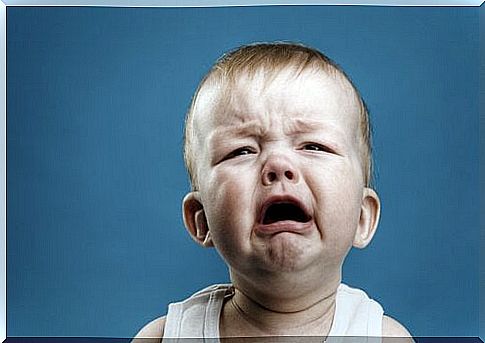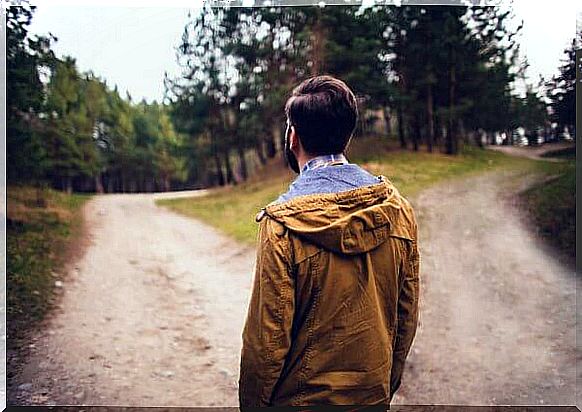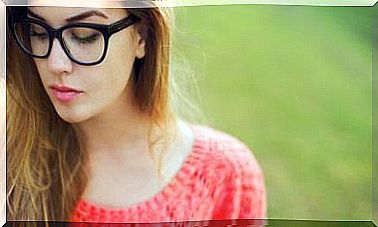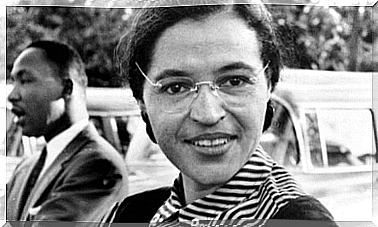Affective Ambivalence: When Love And Hate Coexist In Us

Affective ambivalence is a complex type of emotion; contradiction and tension dwell in it. An example of this is, without a doubt, when we love and hate someone almost at the same time. Having a great affection for a person close to you, but at the same time experiencing a certain resentment. Loving a friend, but feeling that this relationship hurts us…
Why do people suffer from these kinds of conflicting and even adverse feelings? Is it normal or does it respond to some kind of imbalance? The answer is simple: we are facing a perfectly normal type of reality which, in turn, defines the high complexity of human beings in emotional matters.
This theme, moreover, arouses great interest in the scientific community, which has carried out several researches and studies in this regard. Something that to us may seem like a soap opera corresponds to neurologists, psychiatrists, and specialists in emotional psychology to a fact that is a good example of how intricate the emotional structure of our relationships can be.
Thus, authors such as Frenk van Harreveld, from the Department of Social Psychology at the University of Amsterdam, pointed out in a study that affective ambivalence determines not only what we feel, but also that internal complexity that makes us behave in certain ways. An example: there are women who, during the puerperium, experience a clear emotional ambivalence.
They love their newborn baby, but in moments, due to the high demand and dependency of the little one, they can experience the chaotic mix of exhaustion, rejection, tenderness and fear that so defines those first few months between mother and child. We will see more information about this.

Affective ambivalence: characteristics that define it
Affective ambivalence is felt (suffered or enjoyed) by every human being at some point in their life. We know that when we talk about emotions, it is common for names like Daniel Goleman or Paul Eckman to come to mind. Now, it can be said that this subject has been studied since the beginning of the 20th century.
It was the psychiatrist Eugen Bleuler who, in 1911, described affective ambivalence as a “ simultaneous presence of two opposite feelings (attraction and repulsion), of two opposite directions of will, in relation to the same object ”.
Since then, the field of psychology has been constantly interested in a subject that seems to structure different areas. Furthermore, despite the fact that affective ambivalence is so common in our affective relationships, social psychology has also taken an interest in this area in recent years.
The reason? Many of the decisions we make are orchestrated by contradiction (I want to buy this but I can’t now, I want that job in that country but I don’t dare leave my house here, etc.).
The contradiction creates discomfort
Affective or emotional ambivalence generates a high level of discomfort. And if there’s one thing the human brain doesn’t like, it’s the contradiction, the dots that aren’t aligned.
The energy and strain produced by this kind of dissonance is immense. So much so that we are often blocked by these feelings and we become aware of the great love or affection we experience for something or someone, but at the same time we feel a certain exhaustion, rejection and even hate.

We may love someone, but we may hate their behavior, their attitudes, and even their way of treating us. Remember, in turn, our adolescent phase. This part of our life cycle is a constant contradiction, it is a search for experiences, it is fear, anxiety, desire, intensity and anguish at the same time. It’s not easy to take on these kinds of internal contradictions, we’re all aware of that.
Emotional ambivalence leads us to decide
We know that affective or emotional ambivalence is synonymous with contradiction. Now, there is a positive effect on it that makes us decide, clarify or even accept certain situations. The mother going through the complex period of the puerperium is gradually coming to terms with and getting used to her new reality.
When we love and hate someone at the same time, we force ourselves to understand the reality of that feeling. Does love weigh more? Is the contradiction something natural in this passion we feel for our partner? Or maybe this hatred is a fact that I need to be aware of in order to make a decision?
Dr. Laura Rees of the University of Michigan conducted a study in 2013 to show us something interesting. Affective ambivalence favors self-awareness. This discomfort is something our brain needs to soothe and resolve. In fact, it has been shown that this kind of contradiction increases our creativity, leads us to look for channels to think, vent and find original answers to resolve the issue.

To conclude, we can point out a small aspect. Whenever we find ourselves in this kind of personal labyrinth where we are haunted by emotional contradiction, it pays to stop, listen and understand. Maybe there’s something we need to resolve or even assume.
Life itself is contradictory and feelings are even more so. Loving is not easy and requires a high responsibility as well as a commitment, first to ourselves and then to others.








